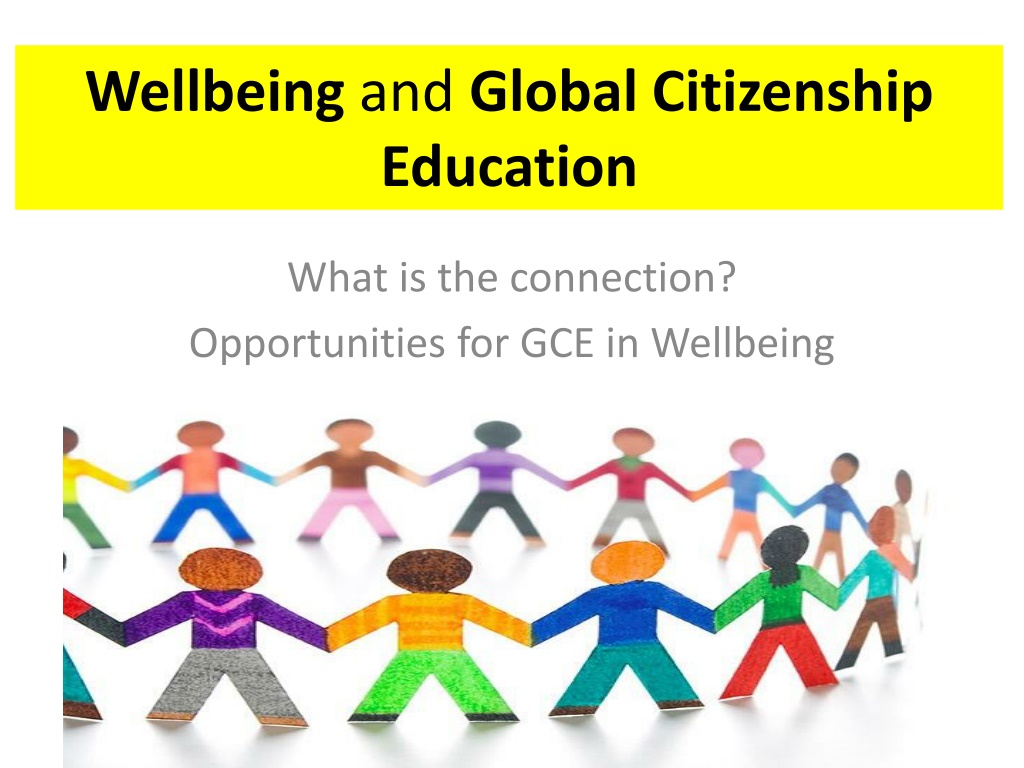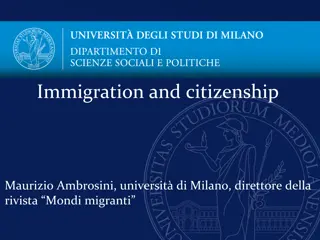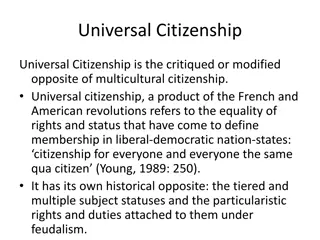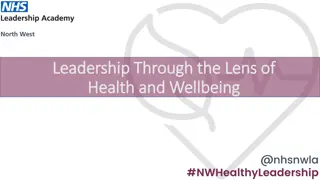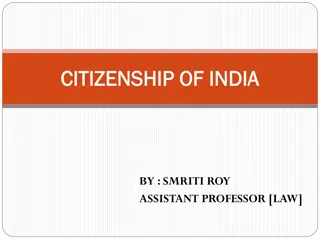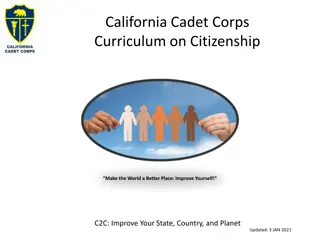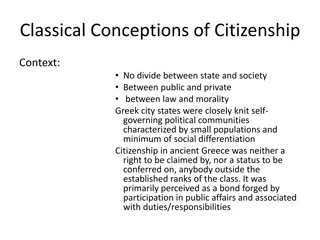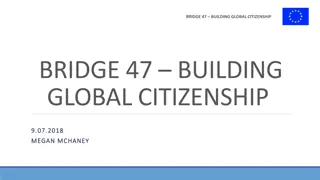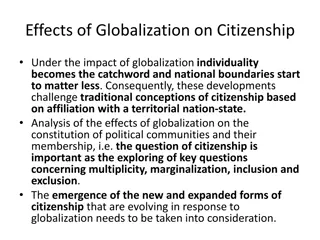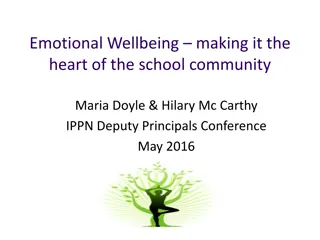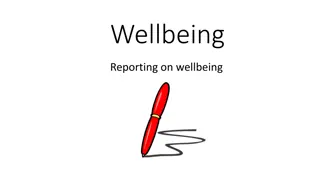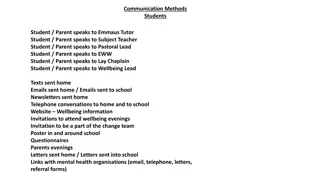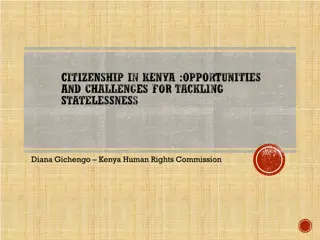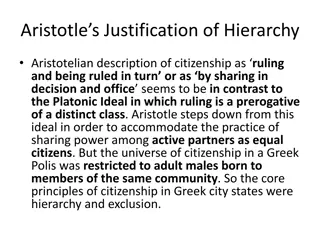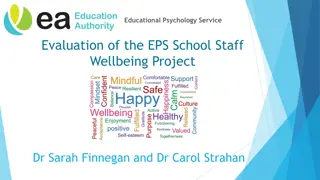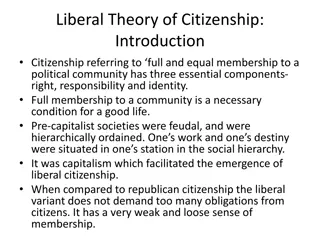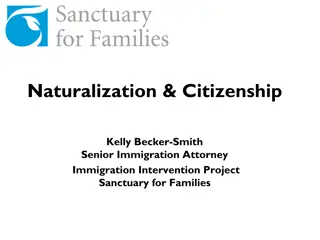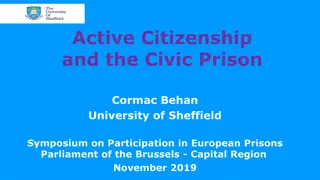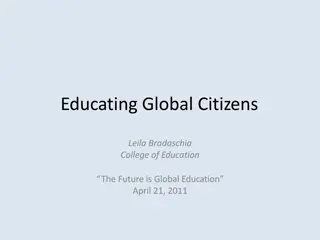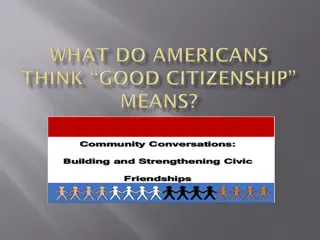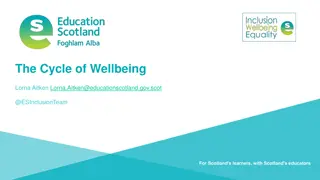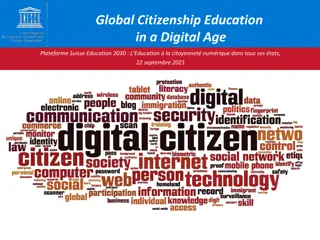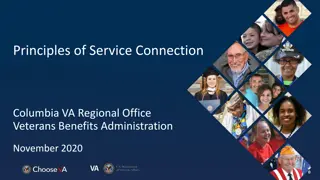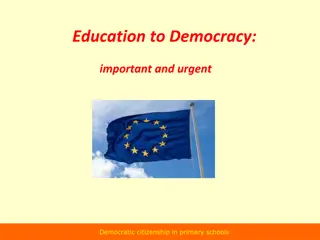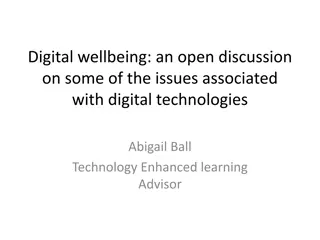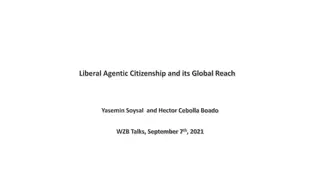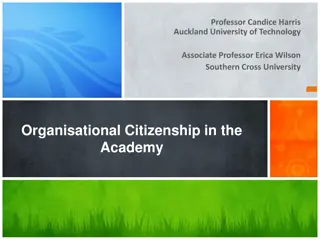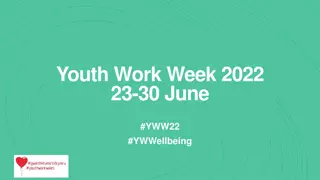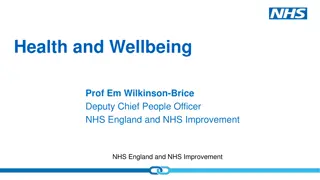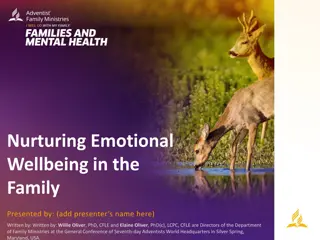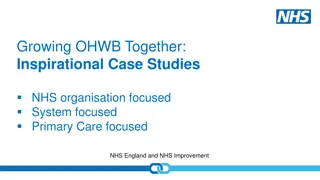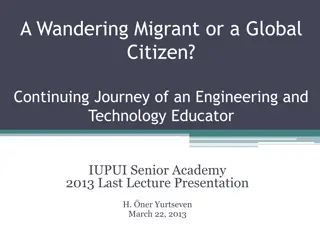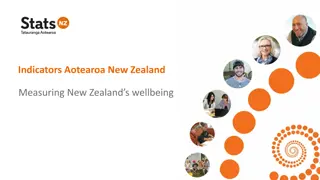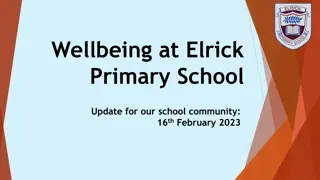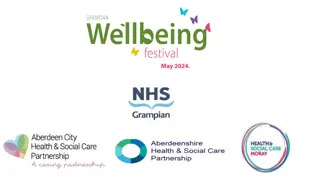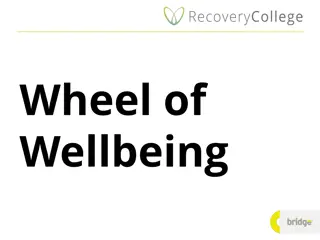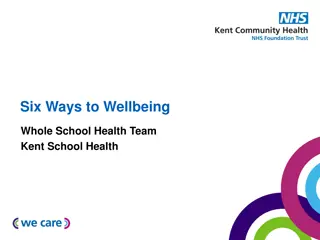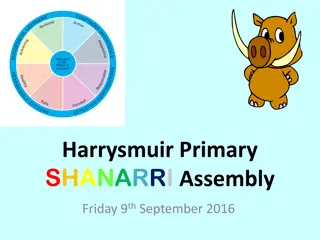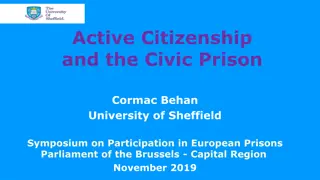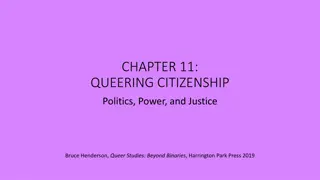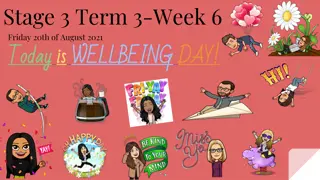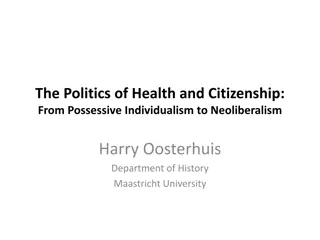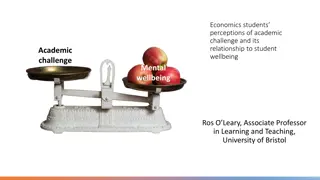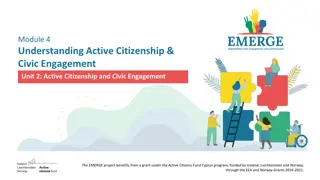Exploring the Connection Between Wellbeing and Global Citizenship Education
The interconnection between wellbeing and global citizenship education is examined, highlighting how GCE empowers learners to engage locally and globally. GCE enables students to progress from basic awareness to informed action on global issues. Wellbeing, with its focus on human flourishing, encompasses positive emotion, relationships, and personal growth. Global goals are linked to wellbeing, emphasizing the importance of fostering creativity, empathy, and resilience in children and young people. The push for wellbeing education in junior cycles reflects a commitment to nurturing these pillars of flourishing in students.
Download Presentation

Please find below an Image/Link to download the presentation.
The content on the website is provided AS IS for your information and personal use only. It may not be sold, licensed, or shared on other websites without obtaining consent from the author. Download presentation by click this link. If you encounter any issues during the download, it is possible that the publisher has removed the file from their server.
E N D
Presentation Transcript
Wellbeing and Global Citizenship Education What is the connection? Opportunities for GCE in Wellbeing
What is GCE? 80:20
What is Global Citizenship Education? aneducational process aimed at increasing awareness and understanding of the rapidly changing, interdependent and unequal world in which we live Irish Aid Global citizenship usually involves three dimensions awareness (of self and others), responsibility and participation. To empower learners to engage and assume active roles both locally and globally i.e as Global Citizens
GCE enables students to move from: Basic Awareness of Local and Global Issues Understanding of the Root Causes and Effects of Global Issues Personal Involvement and Informed Action
Choose a global goal and explain how it is connected to Wellbeing Stand next to the goal What is the connection? What is Wellbeing?
What is Wellbeing? The goal for wellbeing is human flourishing and flourishing rests on five pillars: positive emotion, engagement, relationships, meaning and accomplishment. When children and young people are flourishing , they are not only curious and eager to learn, they are: creative and imaginative connected and empathetic good team players confident about who they are resilient and persistent positive about themselves and see themselves growing into better people.
What is Wellbeing? 400 hours will be available for learning in the area of Wellbeing in junior cycle beginning with a minimum of 300 hours of timetabled engagement from 2017 and moving to the full complement of time as the new junior cycle is fully implemented in schools
6 Indicators for Wellbeing Students experience of GCE and Wellbeing Six indicators have been identified as central to wellbeing Task: Looking at each of the 6 indicators for Wellbeing. Using the post-it notes, examine how Global Citizenship/DE fits each of the indicators? Feedback
WWGS & Wellbeing Indicators Responsible WWGS projects should be student-led and team based, young people take responsibility for their own learning. The issues they choose to focus on and the innovative actions they implement to tackle these issues show that the students are protecting and promoting their wellbeing and the wellbeing of others. Connected Students involved with WWGS must show how they have cooperated with others within and beyond their school. This creates a sense of connectedness to their community and a recognition that they have an important role to play in taking action for global issues and in the wellbeing of others. Resilient Exploring and taking action on global issues enables the young people to recognise that they must be persistent, resilient and constantly innovating to produce meaningful change on the issues they have chosen. Aware Through the exploration of global issues, researching them and developing innovative actions, all students involved with WWGS become more self-aware and come to recognise how their values impact on themselves and the lives of others. They also learn to challenge themselves and reach mature decisions by reflecting on their knowledge, actions., values and attitudes.
Wellbeing and the Curriculum The guidelines place a strong emphasis on the role of: Civic, Social and Political Education (CSPE) (70hr min) Physical education (PE) (135hr min) Social, Personal and Health Education (SPHE) (70hr min) ...in supporting learning about wellbeing and learning for wellbeing.
Other areas of learning and Wellbeing Example: a unit (12 hours) on sustainable living and wellbeing might be provided within home economics, science or geography and counted as part of the school s wellbeing programme. When identifying elements of learning (beyond CSPE, PE, SPHE) important that the rationale for their inclusion is clear, that they are linked to the six wellbeing indicators
Sample module: The Geography of Wellbeing
OECD: Better Life Index How s life? http://www.oecdbetterlifeindex.org/countries /ireland/
Sample module: Global Issues in the news Task: Links to wellbeing What are they?
Sample module: Global Issues in the news Task: Links to wellbeing What are they?
Sample module: Environmental Photography Photography skills Researching artists/photographers Nature appreciation/connection Valuing ones environment Creating an exhibition Young Biodiversity Photographer of the Year Schools Competition
Sample module: ? Opportunities for GCE and Wellbeing in your school Task: In pairs (15min) A) Develop 1 additional area of learning/short module to explore wellbeing and GCE -Provide title of module B) Brief summary of 4 lessons/areas of focus that might be part of the module Things to consider: Related to all or most of the indicators Meeting an identified need for our students
Wellbeing Indicator ACTIVE
Wellbeing Indicator RESPONSIBLE
Wellbeing Indicator Connected
Wellbeing Indicator RESILIENT
Wellbeing Indicator RESPECTED
Wellbeing Indicator AWARE
